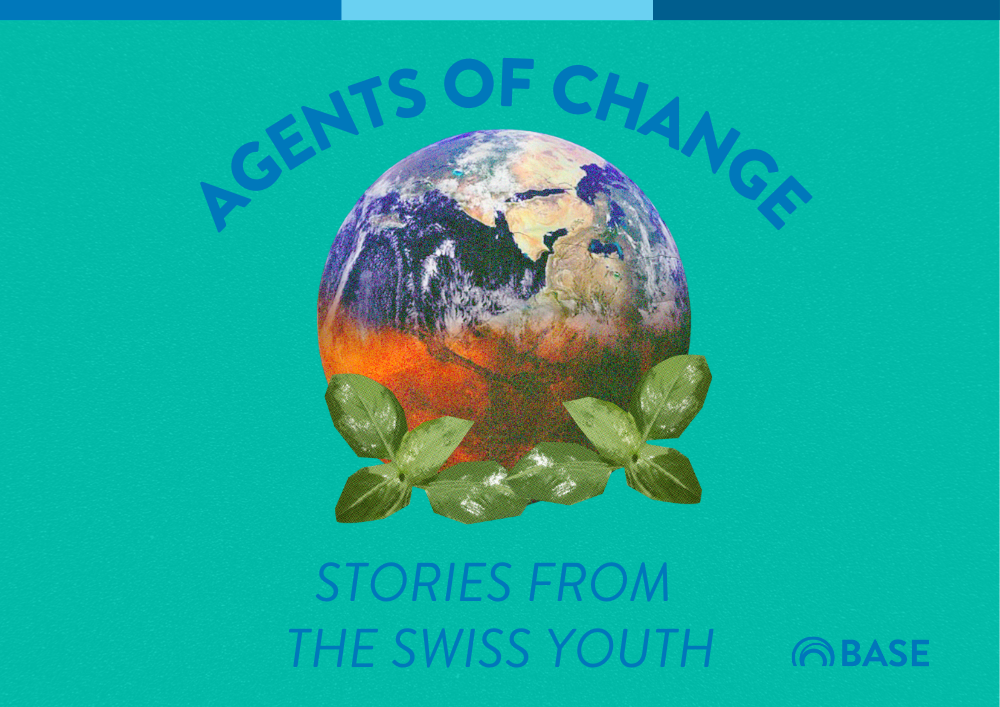
The BASE team met young Swiss action-takers engaged in the fight against the climate crisis. As it becomes increasingly urgent to move towards decarbonised economies and mainstream climate adaptation solutions, the youth constitute a powerful force of mobilisation to trigger change and comprise critical contributors to climate discussions. Solange and Cyrill, our two interviewees, present different backgrounds, visions and endeavours but share the same goal of accelerating climate action at the local, national and international levels. We trust the diversity of their stories will provide valuable insights into the thoughts of the youth and serve as inspirations.
Since records of temperatures started in 1850, it is “more likely than not” there has never been a month hotter than July 2024. If there was a single thermometer for monthly global average temperatures, it would have shown 17.09ºC, putting 2024 in a good position to top the ranking of warmest years on record. All of the past 12 months already reached or exceeded 1.5°C above pre-industrial levels, which was the most ambitious target set by the Paris Agreement in 2016. Beyond extreme heat waves and levels of humidity contributing to the death of hundreds of thousands of humans each year, climate anomalies were felt around the world. Beryl, which became the earliest Category 5 hurricane on record, stands as a mediatised example. Counter-intuitively, climate change probably contributed to an extreme cold wave that struck Patagonia during the Austral winter, killing wildlife in the region and affecting human activities.
If Europe still presents relatively mild symptoms compared to more vulnerable parts of the planet, unusual and destructive weather events are becoming increasingly common. “One of my grandparents is from this region that was flooded a month and a half ago,” said Cyrill, noting the impacts of global warming in Switzerland. “I see it affecting my grandparents, who can no longer leave the house during summer because it is too hot outside. I see it affects my brother’s daily life, who works outdoors and is constantly exposed to harsh conditions. He and his colleagues are currently negotiating with their employers about issues such as who should bear the cost of improved sun and heat protection. Should it be the employees, the employers, or the state?”

We met Cyrill on a sunny summer day of August, as he was attending the No Borders Climate Camp in Basel, advocating for the phase-out of fossil fuels and freedom of movement for all in the context of climate change. Born in 2003, Cyrill has been part of Klimastreik Zuerich, a Swiss equivalent of the Fridays for Future movement inspired by the school strikes of Greta Thunberg, for nearly five years. In this context, Cyrill has organised demonstrations and educational activities, and taken part in the UN Biodiversity Conference (CBD) in Montreal with the youth delegation in 2022 and in the 58th meeting of the Intergovernmental Panel on Climate Change (IPCC) in 2023.
Solange Zongo is a 25-year-old youth advocate, active member of Swiss Youth for Climate (SYFC), and has been recently appointed as a program manager. A few months ago, Solange started a position as a Youth Engagement in Climate Change Action Associate at UNICEF Azerbaijan. She attended the COP 28 with the SYFC delegation and is featured in a documentary reflecting on the experience. Solange graduated from the University of Geneva with a bachelor’s degree in international relations and a master’s in political and cultural geography.
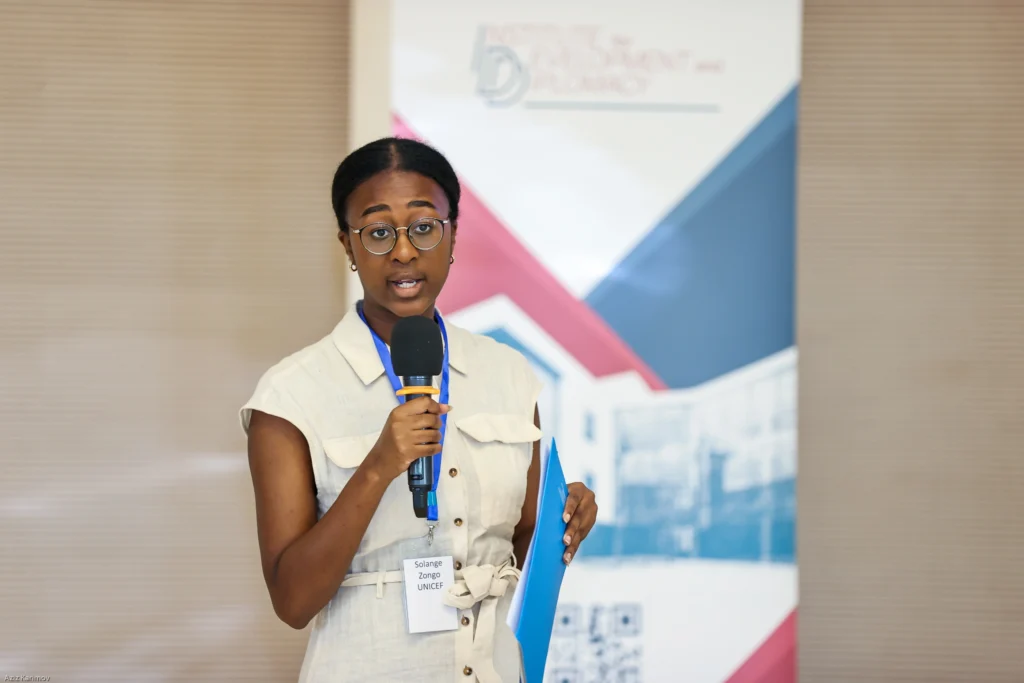
When asked about what brought her to the climate movement, Solange evoked the memories of her geography class, where she first learned about climate change. “I vividly recall the photos of Swiss glaciers, particularly the Aletsch Glacier, and the images showing their decline, and I remember feeling deep sadness and sorrow.” From this young age, these lessons sparked a profound empathy and curiosity for environmental rights and protection.
From Understanding to Acting
Growing up in a middle-class family in Zurich, and aware of the privilege that came with it, Cyrill was fortunate to spend significant time in nature, which fostered a deep connection to the earth. Despite an early awareness of the climate crisis, it was the birth of the student movement in Zurich that became the turning point for Cyrill.
“Back when I was in secondary school, at the age of 15, my mom once handed me the newspaper and said ‘I think this is something for you.” At that time pictures of students around the world going on strike instead of school had already come out in the press and were all over social media, this was the first time the Zürcher youth was taking action. Hermann was not long to follow: “In the beginning, we were three from our class. At my first demonstration, it was absolutely bad weather. It rained the whole day and I was afraid that my colleagues would be disappointed upon arrival at the starting point, in case there would be 50 people or even less, so I was quite nervous. But it turned out to be one of the biggest strikes ever in Zurich.” 12,000 people, all bundled up in raincoats, were present on this day in a life-changing event for the local youth. “Until this day, I had felt alone coping with the climate crisis. The strike was the first time I saw it as a crisis of a whole society that I did not need to go through alone.” It was here that Cyrill first felt the empowering force of collective action, cementing his engagement with the climate movement.
Solange Zongo was born and raised in Carouge, a charming neighbourhood in Geneva, Switzerland. Her journey into climate advocacy, sparked by a deep connection with nature and an early exposure to the realities of climate change, began two years ago as she was completing her master’s degree. “I started as a member [of the Swiss Youth for Climate] in the chapter of Geneva, and a few months later, I decided to take on a leadership role within the organisation. Now I serve as a program manager”. Swiss Youth for Climate, is one of the main youth-led organisations in the country, working at the local, national and international levels. For Solange, the fight against climate change is very much about education. “As a youth advocate,” she explains, “I’m particularly driven to raise awareness and empower young people—especially children. It’s crucial to recognise their vulnerabilities, protect their rights, and ensure they are equipped with the tools they need to advocate for themselves.” Solange strongly believes the younger children are when they become aware of the situation, the sooner they will take it seriously and work towards a better future. “It’s our responsibility to give them the tools they need to grow into agents of change, that’s my belief,”she adds.
Activism, Advocacy and Education: 3 ways to advance the climate mission
Klimastreik’s work spans organising strikes, discussion groups and panels (such as Crash Kurs Klimakrise), and community actions wherever possible. At the core of Klimastreik Switzerland’s mission are three key demands: Net Zero emissions by 2030, in line with the 1.5°C warming limit; climate justice, recognising the crisis as a complex interplay of various injustices rather than an isolated environmental issue; a systemic overhaul. “We believe the root cause of the climate crisis lies in worldviews driven by the exploitation of nature and humans,” they explain, with a conviction that only systemic change can truly address these deep-seated issues.
The movement saw massive national strikes, particularly in 2019, one of the largest in Swiss history, though Cyrill notes that these were more like demonstrations. “We were not working and therefore were unable to generate economic pressure on decision-makers. No one is taking action because students aren’t going to school.”
They also attempted lobbying, meeting with politicians and discussing policies, often protesting outside the government when crucial decisions were being made. “But I think we gave up on that tactic,” Hermann concedes, “because it wasn’t bringing us any further in Switzerland.”
Klimastreik also engaged in civil disobedience, occupying Bern’s federal square for two and a half days, as well as banks, aiming to highlight Switzerland’s role as a global financial hub contributing to the climate crisis. “Our approach spans from moderate to more radical actions,” Hermann explains, highlighting the difficulties youth encounter in identifying effective ways to generate change in a nearly stagnating world.
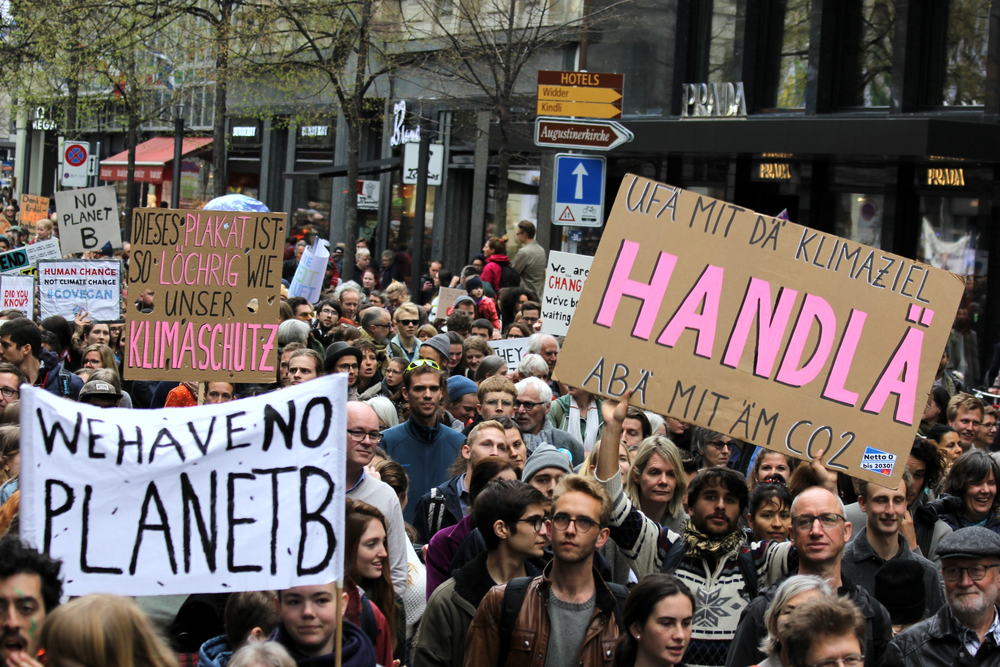
SYFC, established in 2015, focuses on giving youth a voice in the climate discourse. The organisation is currently active in five cities in the country (Geneva, Zurich, Basel, Lausanne and Bern) and hold “Empower, Educate, Act” as a motto. The mission is clear: “Our projects are all about educating and empowering youth and the broader public on the impact of climate change,” Solange explains. Her work includes a range of initiatives, from outreach campaigns to active participation in climate-related conferences.
Beyond broadening awareness, SYFC is also dedicated to fostering dialogue and gathering critical perspectives. “We organise panel discussions at universities, often focusing on topics like climate finance,” she says, describing how they bring together relevant stakeholders to engage with the academic community.
But SYFC’s efforts do not stop there. “We try to set up booths at every festival we can,” Solange notes, referencing their presence at events like the International Human Rights Film Festival and Forum of Geneva (FIFDH). “It’s about being visible, making connections wherever possible.” The organisation also runs a podcast relaying good climate news, The World is Not Ending! along with World Radio Switzerland. Also intervening in the political sphere, Bern’s SYFC chapter rolled out the Adopt a Decision Maker Initiative, which aims to nurture political dialogue between youth and parliamentarians on climate policies.
On a national level, the SYFC team undertakes even larger projects. “We produced a documentary about COP 28, Hearing no Objections.” She highlights, “Emily, our producer, and I embarked on a crazy adventure. We discussed this one day, having a coffee last summer. I remember it was July and we had this crazy idea of going to COP and producing this documentary to showcase what young people do at COP. So not only what they do but also, to showcase their emotions, the challenges they face, their victories and also setbacks.” Hearing no Objections takes viewers inside the world of climate negotiations, offering a rare glimpse through the eyes of young delegates. On top of this, the organisation is also conducting a survey to gauge young people’s opinions on climate policies in Switzerland. “Whether they’re happy or not, it’s crucial feedback, both for us and the government.”
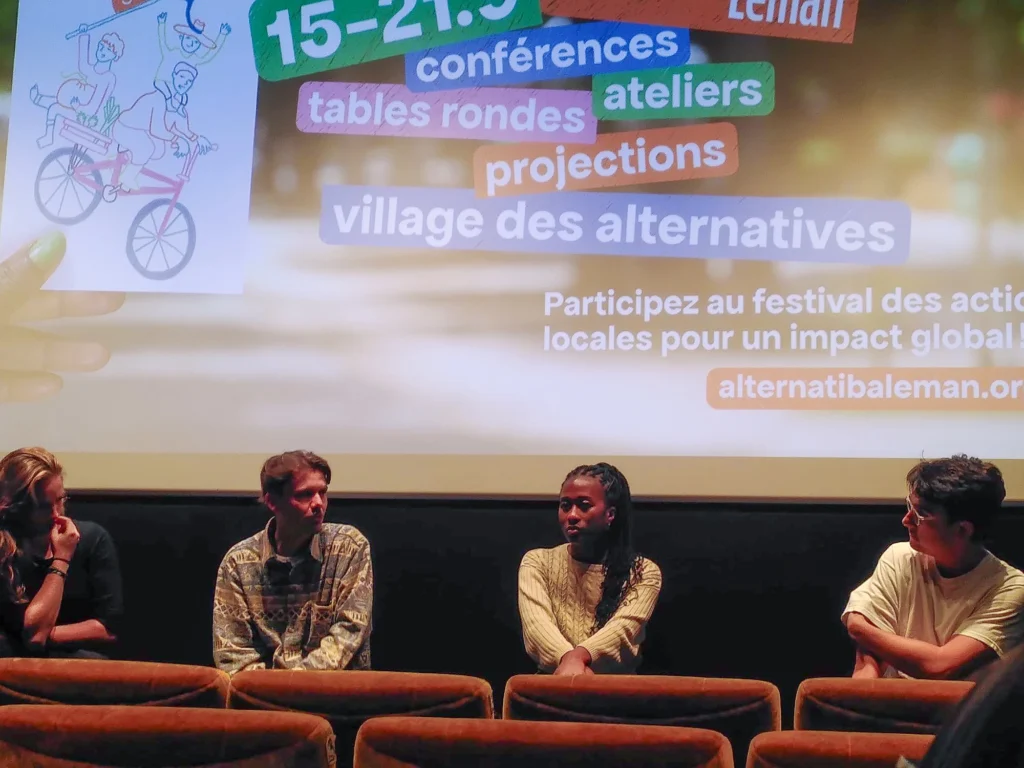
Achieving Impact: A Pending Challenge
When asked about the most effective action within the climate movement, Cyrill Hermann pauses, considering the complexity of the question. “I think that’s one of the biggest challenges we face right now—how to reconcile the different approaches to making our voices heard. The climate strike movement as a whole, although sharing the same mission, is now grappling with internal differences in preferred strategies, making it difficult to chart a clear path forward. “It’s crucial that the various wings of the broader movement work together,” Hermann continues, “but I don’t think that’s happening anymore at the moment.”
This internal struggle was a key topic of discussion at the No Borders Climate Camp, where Hermann and other activists gathered to debate the future of the movement. “We’ve tried so many different actions, but they haven’t brought us much further,” he reflects. “There have been small successes, but in comparison to the scale of the crisis, it feels like nothing.”
For Hermann, one solution resides in the reorganisation of the collaboration between the different wings of advocacy “so the parties and the NGOs can leverage our power on the streets to really bring new policies that hopefully will create change.” However, this view isn’t universally accepted in the movement, as some believe distance should be kept from these organisations, regretting their inability to meet promises they previously made in terms of impact.
“We need to focus more on organising people rather than just mobilising them,” Hermann points out, citing the Strike for Future campaign, where 164 local groups were set up across Switzerland. “These climate groups in villages, districts, and neighbourhoods have brought people together to think about how they can take action as a community and increase pressure on politicians.”
The new tactic, Hermann believes, is to embed the movement within broader society. “We can organise people in schools, where they can join groups, or in neighbourhoods, where local groups meet to discuss their contributions to the climate movement,” he explains. This approach extends to workplaces as well, encouraging collective efforts to drive change. “It’s about staying within the structures of the movement to build up the counter-power,” Hermann concludes, highlighting the importance of sustained, grassroots organisation in the fight against climate change.
Asked to share where she sees the most success in reaching the wider public, Solange emphasised the already significant impact of the documentary. “Our main goal was to spark discussions about the importance of youth presence in these spaces,” she says. “We wanted to show that we’re not just there for the sake of being there and to check a box—we’re there to make a difference.”
So far, the SYFC held multiple screenings in Switzerland and abroad, and the feature was selected for several international festivals. “Nominations are not what I find the most pride in. For me, it’s more about how many people came to the screenings and how interested they were and the discussions it generated. We also have had youth activists from other countries who decided to screen it in their country, so we had a screening in Africa. And I just love the fact that it touched so many people.”
For Solange, the greatest strength of the documentary is that it directly touches the ‘empowering aspect’: “When young people see this, I want them to believe in themselves and to really see their power of being agents of change”, even though certain feedback highlighted a sad tone to it. “We’re showing reality, it’s not easy, lots of things in the end don’t really happen the way we want to.”
Turning Eco-anxiety into Eco-action
“Until my first strike, I was scared and anxious,” Cyrill confesses. “I felt the whole pressure was on me or the consumers, and I felt very alone in that feeling.” It wasn’t until he joined the first climate strikes that Hermann realised he wasn’t alone, and this shared experience was a turning point. “It made it easier to cope, and I understood that fear had become a collective feeling.” But looking at the political situation and how far achieving climate justice seems to be, the fear also seems far from entirely vanishing.
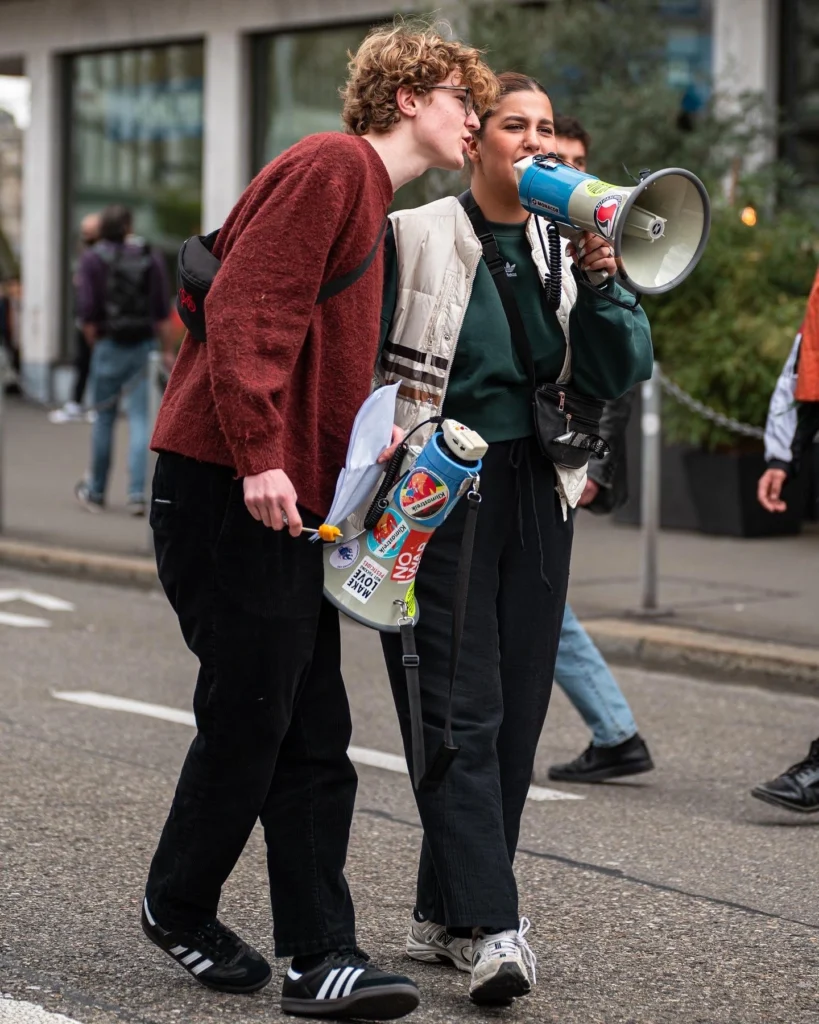
The impact of climate anxiety, Solange Zongo notes, varies widely from person to person. “Some people may experience sadness, anger, or even laziness, while others suffer from more serious consequences like depression, hopelessness, and a lack of motivation,” she explains. This is not a cry for attention, she stresses, though sadly, it’s often dismissed as such. “This is really about our future, and many young people are genuinely concerned about what that future will look like.”
Solange believes a key to addressing eco-anxiety is to invest in green skills and green jobs, as such investments not only equip young people to face environmental challenges but also provide a sense of purpose in the professional space. “The future may seem bleak, but if we can create more jobs in the green sector, it gives us the feeling that we’re actively working towards a better future,” she says. “A green job is important because we need to eat and live, so if we can combine climate action and our job, it’s perfect!”
On top of that, communicating about these feelings and getting involved are two of her advice. “Talking about it, joining an organisation, volunteering, or simply connecting with nature can have a far-reaching impact. It sounds very basic,” she admits, “but it goes so far.”
Stronger Together: Fostering Intergenerational Collaboration
Tackling the climate crisis requires mobilising all categories of citizens at their own levels, ensuring collective action and inclusion. From the beginning Cyrill noticed a glaring gap at the climate strikes and demonstrations. “Young people and the elderly were present,” he recalls, “but the working-age population was largely absent.” This disconnection, he believes, has been one of the more persistent challenges of the climate movement.
As the movement gained momentum, other groups began to form, notably “Klima Großeltern” in Germany and Switzerland, which translates to “climate grandparents.” Parent groups also began to emerge, organising their own activities while supporting youth-led demonstrations. “We’ve maintained good contact with them [the parents groups] and worked together extensively,” Hermann says. Yet, reaching those in their working years has proven difficult. “We had to learn that it couldn’t just come from us,” Hermann reflects. “The working population must also organise themselves within their own spaces.” While reaching this demographic is not the movement’s primary focus anymore, Hermann notes that working at the community level, particularly in neighbourhoods, seems to engage them more effectively.
For Solange, breaking the barriers between generations in the climate movement starts with changing how the youth is perceived: “It’s crucial to raise awareness of the skills and value that young people bring to the table. We need to challenge the entrenched notion that young people are merely vulnerable, passive and that we are just victims of the circumstances because it’s not true,” she asserts. “If older generations can see us as valuable resources, it helps level the playing field.”
On the other hand, ensuring inclusivity in any decision-making process is essential to bridge the gaps between generations. “For me young people bring freshness, creativity and a deep understanding of contemporary challenges that society faces such as technology, social media and AI…,” she affirms. “Young minds are often more critical, in a sense that they’re willing to question the status quo, at least from my perspective of people around me.” She cites the “Adopt a Decision-Maker” initiative as an example of collaborative action to take inspiration from, as well as the YOUNGO, the children and youth constituency of the United Nations Framework Convention on Climate Change (UNFCCC), which strives to foster inclusivity within climate talks, “for me, it’s also very, very important if we’re going to address this issue.”
Inclusivity, inclusivity, inclusivity!
Ensuring inclusivity goes beyond merely offering young people a seat at the table: it’s not just about being heard, it’s about being truly listened to. “Often we can face youth-washing, inviting the young people just for the sake of inviting them,” Solange notices, “it is not a meaningful inclusion.” Although documenting the needs, ideas, and expectations of the youth with a sincere intent to integrate them into future plans and policies is necessary for ensuring effective action for this part of the population, Solange acknowledges that simply being present is a significant first step. “The mere fact of having us sitting at the table is already very powerful in its own way,” she observes, “because we are there, and we listen, we are part of the discussion even if we don’t talk”. But the “meaningful inclusion” of the youth goes back to the challenge of its perception among the decision makers: “We need to prove our ability, because I think everything goes hand in hand, we do the job correctly and then we are taken seriously,” she says. “We also need to believe in ourselves and not wait for all the people to believe in us before we do, because I think it would be too late. We experience our own difficulties, our own problems. So we are experts, actually! Experts about how we are affected by climate change, and how we envision the future.” But to strengthen this ability, she also stresses the need to invest in capacity building, to empower the youth to undertake relevant action in the first place.
Beyond age, inclusion must be done at all levels and not forget often marginalised communities, integrating individuals of diverse social backgrounds, nationalities, ethnicities, genders, sexual orientations, religions and disabilities. “We must stray away from stigma, because stigma creates marginalised communities.” Solange points out. While it may be easier to identify and then include the communities affected by climate disasters, other marginalised groups—those defined by religion, sexual orientation, or ethnicity—often remain hidden, “fearing it could put them in difficult situations,” she flags.
Cyrill uses the example of the LGBTQIA+ community, which tends to be more vulnerable to climate impact difficulties: “Many migrants fleeing due to the climate crisis face greater danger, hatred, and discrimination if they are queer, which significantly reduces their life chances,” they explain. While the connection between climate change and gender identity may not be immediately obvious, it is undeniably present. But, for Cyrill, bringing the queer and LGBTQIA+ community closer to the climate movement has not been easy. “Sometimes, it can be difficult to convince your own community that they are disproportionately affected by climate change, but it’s equally important that the rest of society helps create the awareness and support needed to address these impacts.”
The lack of research on this intersection of queer lives and climate crisis, their involvement in the climate movement, and the need for queer perspectives in the climate movement is another significant barrier. “While writing my first book, I realised how limited the data is, especially outside the US and the Global North,” Cyrill notes. “There is definitely a problem of insufficient research in the Global South,” they conclude, emphasising the need for more robust data and open dialogue on the LGBTQIA+ community’s needs.
Making a Life Out of Impact: Stepping into the Professional World
Navigating the transition from activism to the professional world can be a challenging journey for anyone deeply committed to social and environmental causes. Finding a career path that aligns with their convictions and ethics is no small feat, but for Cyrill Hermann the priority is clear: to remain deeply involved in the climate movement. “We have a window of five and a half years until 2030, and it’s closing quickly,” Hermann says, “I feel it’s my responsibility, especially as a relatively privileged person.” Cyrill will begin studying socio-anthropology and geography at the University of Zurich,
In parallel, Cyrill’s first book What Do We Want? The climate strike – from system change to climate justice, is set to be published in December 2024. The piece serves as both a reflection on the Swiss climate strike movement and an exploration of global perspectives on the climate crisis. The first part is for people who need guidance or have lost track of the climate movement. “It explains why we are where we are now as a movement.” The second part addresses key questions about how to fight the global crisis locally while considering global voices and perspectives. “The book aims to reconnect with broader society; it’s very much for the people who once were part of the climate movement or once went for a strike or knew someone who went, but got confused by other actions or speeches. I would like to give a hand to people who want to understand what is going on in the climate movement but have lost the thread and are now confused as to our direction. But spoiler alert: We have good reasons to question the system, and anyone who is now confused should read the book.”
On her side, Solange started her role with UNICEF in Baku five months ago. Working within the Adolescent Development and Participation team, her mission is to build the capacity of young locals, equipping them with the tools to address the climate crisis. The scope of her work stretches from local initiatives to larger projects powered by UNICEF’s regional office and headquarters. On the ground, she leads a group of 30 young activists, known as the Youth Climate Envoys. “First, we focus on building their capacity,” she explains. “Once they have the knowledge, it’s about them spreading it.”
One of the flagship initiatives under her guidance is the ‘Climate Weeks’ initiative, an initiative powered by UNICEF jointly with the Ministry of Youth and Sports of the Republic of Azerbaijan. Solange and her team travel to various regions in Azerbaijan, conducting info sessions and a policy game designed to engage children and young people creatively. “We set up a case study where they imagine living in a village near a receding lake. What solutions can they come up with?” she says giving an example of how the program encourages creative problem-solving.
Beyond local efforts, the work of her service is also focused on engaging young people in Azerbaijan in broader UNICEF goals. “For example, we’re preparing an NDC training for your people,” she notes, referring to the Nationally Determined Contributions that are critical in the global climate framework. “It’s important for these to be child-sensitive, and we’re working on how young voices can contribute to the development of NDC 3.0 here in Azerbaijan.”

In the end, the critical need to scale up climate finance is reflected in one of the greatest challenges of today’s youth: reconciling the need to drive change towards a sustainable world and a professional career enabling financial comfort, which can be achieved by creating more positive impact jobs. “This is crucial in terms of work-life balance”, Solange says. “In Switzerland, much of the climate action is driven by volunteer work due to the lack of funding,” she adds, noting the strain this places on human resources. “Some people within SYFC have very different jobs, and everything they do for the climate is on the side. It takes time, and it can burn people out.” While Solange deems herself fortunate to have such a meaningful position, not everyone is so lucky, and society must strive to democratise such opportunities.